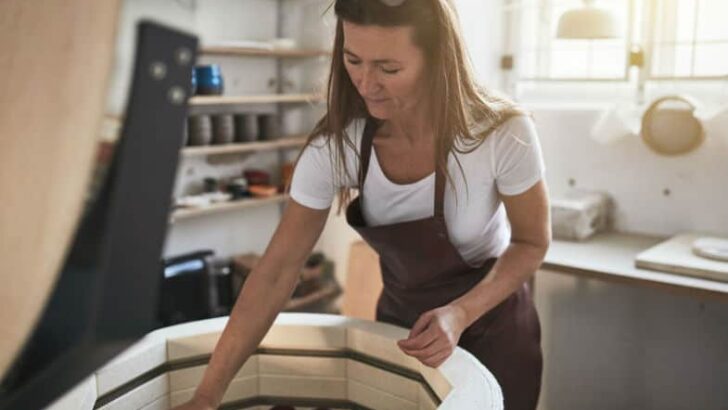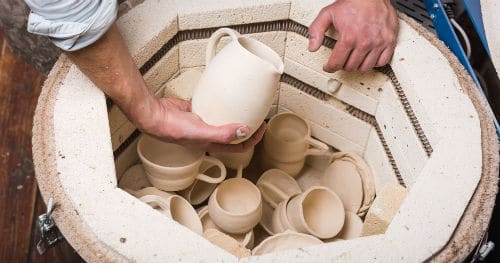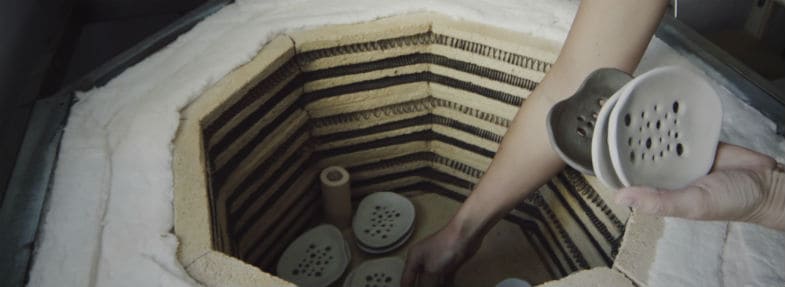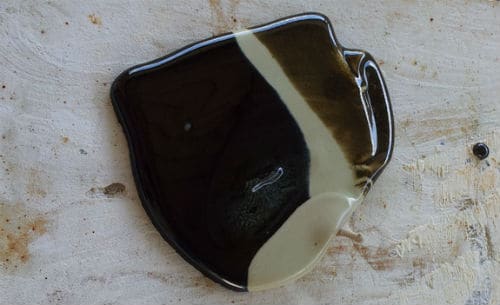Your cart is currently empty!
Can You Leave a Kiln Unattended – Is it a Good Idea?
Published:
Last Updated:

Affiliate Disclaimer
As an affiliate, we may earn a commission from qualifying purchases. We get commissions for purchases made through links on this website from Amazon and other third parties.
Biscuit and glaze firing both take a long time. Each firing takes around 8-10 hours and on top of that the cool down will take the same amount of time again. So, do you need to be there for the whole time that the kiln is firing, or can you leave a kiln unattended?
Some potters do leave their kiln unattended whilst it fires. However, all manufacturers and most potters will recommend not doing this. Things can go wrong with kilns. At best this leads to a kiln of ruined pottery. At worst, it can lead to a damaged kiln or a studio fire.
Reasons Potters May Leave a Kiln Unattended:
- Firing takes time, and many potters don’t want to be chained to the studio whilst the kiln is in operation. This is particularly the case if your pottery studio is not located at your home.
- Kilns are expensive to run, and you may want to capitalize on inexpensive electricity rates overnight.
- You may be a production potter, producing large amounts of pottery, and firing regularly. As such, babysitting your kiln may not feel realistic.
Some Reasons That Kilns Fail
There are lots of different kinds of kiln. The most common are gas and electric. And of the two, electric kilns are the most commonly used. This is partly because most electric kilns come with digital control panels.
A lot of this article is written with electric kilns in mind. The reason for this is that it is generally accepted that gas-fired kilns require more nursing during firing. By contrast, the control panels on an electric kiln do make them more self-sufficient.
It’s easy to understand why a potter might feel that you could leave an electric kiln to do its thing. And to an extent, once you have programmed an electric kiln, you can trust it to fire on schedule. On the whole, electric kilns are reliable and create consistent firing conditions.
However, electric kilns are not infallible and parts of the kiln can fail. One of the things that can go wrong is that the elements in an electric kiln don’t last forever. With time and due to wear and tear they can stop working.

Underfiring
You may not even know that this has happened until you notice that areas of your pottery are underfired. Underfired glaze can often look cloudy or milky.
This is an indication that there are cooler spots in your kiln where the element has gone. Whilst underfiring and cool spots in your kiln are a pest, it is not as problematic as overfiring.
Overfiring
Overfiring refers to when the temperature of a kiln escalates well beyond that which was intended. It also refers to when a kiln stays at high temperatures for longer than is recommended. There are several reasons why overfiring can occur, let’s have a look at those now…
Reasons That Overfiring Can Happen
There are a number of fittings and gadgets installed in many kilns that control the temperature of the kiln. They also act as points of safety to shut the kiln down if they stop working or problems occur. These fittings are relays, kiln sitters, and thermocouples. Here is an overview of some of the problems that can occur with each.
Faulty Relays
One of the reasons is that relays in the kiln’s controller can fail. Relays are components in the controller that switch the elements of the kiln on and off. If a kiln is getting too hot, the controller will instruct the relay to turn one of the elements off (source). Likewise, if the kiln is running too cool, the controller ensures the relay switches the elements on.
Relays are not infallible and they can stop working. If they get stuck in the off position, the kiln will essentially switch off. In this case, the worst that will happen is that your pottery will be underfired.
It can be more problematic if relays get stuck in the on position. If they are stuck on, they don’t respond to the signal that the kiln is getting too hot. However, most kilns have two or more relays. So, if one gets stuck on the other relay will ensure that the kiln doesn’t overheat.
The likelihood of more than one relay malfunctioning is very low, though not impossible. Normally the worst that happens if a relay does break, is that your kiln will not cool down completely. Usually, the temperature in the kiln will stay at around 1400F if a relay stops working (source).
Faulty Kiln Sitter
Another device that is used to manage kiln temperature and timings is a kiln sitter. A rod passes loosely through the wall of the kiln in a tube. A pyrometric cone is placed on two supporting bars. The kiln sitter rod rests on top of the cone. As the kiln heats up the cone bends and droops between the supporting bars, and the rod drops. As the rod drops this turns off the kiln.
However, kiln sitters do malfunction. For example, the ‘actuating rod’ that goes through the tube might be obstructed in some way. If this happens the cone may bend as the temperature rises. But if the rod is stuck the bent cone does not signal that the kiln needs to be shut off.
Most kiln sitters have a limit timer on them too. These are set to shut the kiln down an hour after the firing is due to have ended. Nevertheless, the firing gauge on which the cone sits and the limit timer can go wrong. If they do, then the heat in the kiln might escalate unchecked. This is when over-firing can occur.

Faulty Thermocouple
Kilns can also be fitted with thermocouples. Thermocouples are temperature sensors that are inserted through a hole in the kiln wall. These enable the potter to monitor the kiln temperature by relaying the information to a digital display panel.
However, thermocouples can burn out and fail and digital displays can malfunction. Also, if a piece of pottery topples over in the kiln, it can move and bump into the thermocouple.
If the thermocouple gets pushed back into the cavity in the kiln wall it will give an inaccurate reading. Firebricks are cooler than the temperature in the kiln. As a result, your kiln may be over-firing without this being registered by the thermocouple.
Many kilns are set up with more than one thermocouple so that if one fails the others continue to function. All the thermocouples may malfunction at once. When thermocouples are linked up to a control panel, then the electronic controller will shut down the kiln. However, on rare occasions, the controller can stop working too.
What are the Dangers of Leaving a Kiln Unattended
Some of the dangers of leaving a kiln unattended are over-firing and studio fires.
Overfiring When a Kiln is Left Unattended
Overfiring can result in different levels of damage. If you have been monitoring your kiln, then the overfire might just result in a drippy, runny-looking glaze. It can also result in the clay warping if the temperature gets hot enough.
More seriously, if the temperature continues at a high level unchecked, then it can actually melt the clay body. If this happens the clay and glaze can end up in a puddle on the kiln shelf. This can ruin the interior of your kiln.

A lot of smaller hobby kilns can’t get hot enough to completely melt the pottery they are firing. As such, there is less risk of the pottery and kiln being destroyed by overfiring. However, a cone 10 kiln, that fires up to around 2381F (1305c) can reduce clay to liquid, which can ruin the kiln.
Studio Fires When a Kiln is Left Unattended
If your kiln overfires, the clay may melt and destroy the inside of the kiln, but the heat will be contained within the kiln (source). However, actual studio fires can start in the vicinity of the kiln.
Here are some reasons why studio fires can occur:
- Poor installation, including electrical fires from poor wiring.
- Insufficient space around the kiln so there is not enough room for airflow. This can lead to heat build-up.
- Flammable materials, that are positioned too close to the kiln during operation.
Some Suggested Precautions for Using a Kiln
- Situate your kiln on a brick or concrete floor.
- Make sure that there are no flammable materials within 10-15 feet of the kiln.
- There must be enough airflow into the room and around the kiln.
- Install a fire alarm system and sprinkler system. One recommendation is that the sprinkler system is set at the maximum temperature so it isn’t set off in error. Sprinkler systems cause a lot of damage to kilns and properties when they go off. So, if you use one, you want to know that it will only be set off when it’s really needed. Not just because of a normal level of heat being radiated by the kiln.
- If possible, leave the door to the kiln room open or leave a window open. This can help prevent the build-up of heat.
- Double-check that you are firing to the right cone for the clay and glaze you are using.
- When you buy a kiln, it will come with recommendations from the manufacturer about how to install it safely. This will include specifications about distances from walls, ventilation, and other environmental factors that need to be taken into consideration.
- Check your kiln at regular intervals to make sure everything is ok.
- Have a fire extinguisher in your kiln room. ABC powder extinguishers are suitable for electrical equipment. You would be wise to talk to your local fire authority if you want specific guidance on this.
If You Are Going to Leave Your Kiln Unattended…
Almost all manufacturers and installers will advise against leaving a kiln unattended. Nevertheless, some potters feel that the risk is low and decide to take the chance. Other potters feel strongly that kilns should never be left unattended.
Whether you choose to leave your kiln unattended or not is a matter of personal choice. Some potters regularly leave their kiln unattended to fire overnight. Other potters stay nearby and check in on the kiln regularly. Still, other potters prefer to be present when the kiln is on. Ultimately, it is for the individual to decide what they are comfortable with when armed with the facts.
If you do decide that you are going to leave your kiln unattended, here are some things to consider:
- It is generally recommended that you are around at the end of the firing schedule. This can help reduce the chance of overfiring if the kiln is not ramping down or shutting off as scheduled.
Most kilns have a time delay feature, which allows you to program the kiln to start at a later time. This means that you can set it so that the cycle ends when you are due to be back in the studio. - Kiln monitoring software is now available. This software relays information about your kiln and to the cloud. In turn, this information is relayed to your computer or smartphone. You can also be notified by email or SMS message about how a firing is progressing. If there is a problem you will be notified.
- Some potters use a smoke alarm in the kiln room. If your kiln is in a garage very nearby, you can rig up a baby monitor next to the alarm. If the alarm goes off, you will hear it over the baby monitor.
Does Your Insurance Cover You if Your Kiln is Unattended
On a related point, if you are using a kiln it is a good idea to consult with your insurance company. Having a kiln may affect your insurance policy. This does seem to vary from provider to provider, so it’s worth checking out.
It is also worth looking into whether your insurance policy is affected if you leave your kiln unattended.
Final Thoughts
As kilns have become more sophisticated, they have become programmable and safety measures have been integrated. Nevertheless, regardless of safety measures, the kiln is still reaching high temperatures and generating intense heat. Ultimately if you choose to leave your kiln unattended, there are risks involved. These risks need to be factored into your decision.



